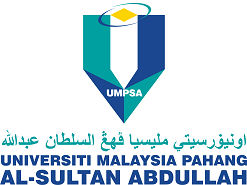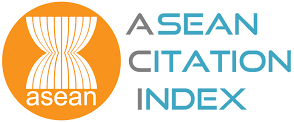Influence of process parameters on surface roughness and forming time of Al-1100 sheet in incremental sheet metal forming
DOI:
https://doi.org/10.15282/jmes.13.2.2019.11.0408Keywords:
Incremental sheet metal forming, surface roughness, productivity, forming time, Taguchi, ANOVAAbstract
Product quality and production time are critical constraints in sheet metal forming. These are normally measured in terms of surface roughness and forming time, respectively. Incremental sheet metal forming is considered as most suitable for small batch production specifically because it is a die-less manufacturing process and needs only a simple generic fixture. The surface roughness and forming time depend on several process parameters, among which the wall angle, step depth, feed rate, sheet thickness, and spindle speed have a greater impact on forming time and surface roughness. In the present work, the effect of step depth, feed rate and wall angle on the surface roughness and forming time have been investigated for constant 1.2 mm thick Al-1100 sheet and at a constant spindle speed of 1300 rpm. Since the variable effects of these parameters necessitate multi-objective optimization, the Taguchi L9 orthogonal array has been used to plan the experiments and the significance of parameters and their interactions have been determined using analysis of variance (ANOVA) technique. The optimum response has been brought out using response surfaces. Finally, the findings of response surface method have been validated by conducting additional experiments at the intermediate values of the parameters and these results were found to be in agreement with the predictions of Taguchi method and response surface method.
References
Filice L, Fratini L, Micari F. Analysis of material formability in incremental forming. CIRP Ann - Manuf Technol 2002;51:199–202.
Lu C. Study on prediction of surface quality in machining process. J Mater Process Technol 2008;205:439–50.
Hagan E, Jeswiet J. Analysis of surface roughness for parts formed by computer numerical controlled incremental forming. Proc Inst Mech Eng Part B J Eng Manuf 2004;218:1307–12.
Attanasio a., Ceretti E, Giardini C, Mazzoni L. Asymmetric two points incremental forming: Improving surface quality and geometric accuracy by tool path optimization. J Mater Process Technol 2008;197:59–67.
Ambrogio G, Filice L, Manco GL. Considerations on the incremental forming of deep geometries. Int J Mater Form 2008;1:1143–6.
Radu MC, Cristea I. Processing Metal Sheets by SPIF and Analysis of Parts Quality. Mater Manuf Process 2013;28:287–93.
Mugendiran V, Gnanavelbabu a., Ramadoss R. Parameter Optimization for Surface Roughness and Wall Thickness on AA5052 Aluminium alloy by Incremental Forming using Response Surface Methodology. Procedia Eng 2014;97:1991–2000.
Kumar A, Gulati V, Kumar P. Investigation of Surface Roughness in Incremental Sheet Forming. Procedia Comput Sci 2018;133:1014–20.
Liu Z, Liu S, Li Y, Meehan PA. Modeling and Optimization of Surface Roughness in Incremental Sheet Forming using a Multi-objective Function. Mater Manuf Process 2014;29:808–18.
Kurra S, Hifzur Rahman N, Regalla SP, Gupta AK. Modeling and optimization of surface roughness in single point incremental forming process. J Mater Res Technol 2015;4:304–13.
Khalatbari H, Iqbal a., Shi X, Gao L, Hussain G, Hashemipour M. High-Speed Incremental Forming Process: A Trade-Off Between Formability and Time Efficiency. Mater Manuf Process 2015;30:1354–63.
Najafabady SA, Ghaei A. An experimental study on dimensional accuracy, surface quality, and hardness of Ti-6Al-4 V titanium alloy sheet in hot incremental forming. Int J Adv Manuf Technol 2016;87:3579–88.
Shanmuganatan SP, Senthil Kumar VS. Modeling of incremental forming process parameters of Al 3003 (O) by response surface methodology. Procedia Eng 2014;97:346–56.
Kurra S, HR N, Regalla S, Gupta AK. Parametric study and multi-objective optimization in single-point incremental forming of extra deep drawing steel sheets. Proc Inst Mech Eng Part B J Eng Manuf 2016;230:825–37..
Mulay A, Ben S, Ismail S, Kocanda A. Experimental investigations into the effects of SPIF forming conditions on surface roughness and formability by design of experiments. J Brazilian Soc Mech Sci Eng 2017.
Gatea S, Ou H, McCartney G. Review on the influence of process parameters in incremental sheet forming. Int J Adv Manuf Technol 2016:1–21.
Formisano A, Boccarusso L, Carrino L, Durante M, Langella A, Minutolo FMC, et al. Formability and surface quality of incrementally formed grade 1 titanium thin sheets. Key Eng Mater 2016;716:99–106.
Sarraji WKH, Hussain J, Ren W-X. Experimental Investigations on Forming Time in Negative Incremental Sheet Metal Forming Process. Mater Manuf Process 2012;27:499–506.
Hussain G, Al-Ghamdi K a., Khalatbari H, Iqbal a., Hashemipour M. Forming Parameters and Forming Defects in Incremental Forming Process: Part B. Mater Manuf Process 2014;29:454–60.
Li Y, Liu Z, Daniel WJT (Bill., Meehan P a. Simulation and Experimental Observations of Effect of Different Contact Interfaces on the Incremental Sheet Forming Process. Mater Manuf Process 2014;29:121–8.
Malhotra R, Reddy NV, Cao J. Automatic 3D Spiral Toolpath Generation for Single Point Incremental Forming. J Manuf Sci Eng 2010;132:61003.
Blaga A, Bologa O, Oleksik V, Breaz R. Influence of tool path on main strains, thickness reduction and forces in single point incremental forming process. Proc Manuf Syst 2011;6:2–7.
Downloads
Published
Issue
Section
License
Copyright (c) 2019 The Author(s)

This work is licensed under a Creative Commons Attribution-NonCommercial 4.0 International License.






